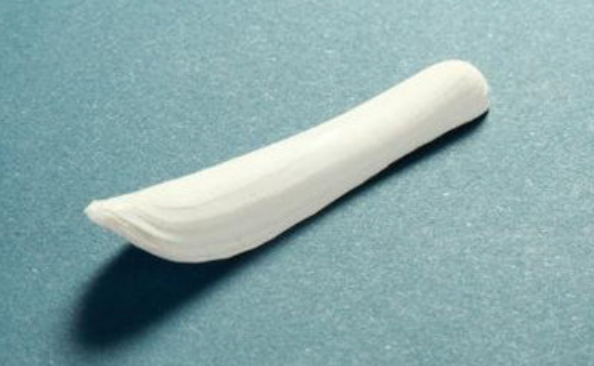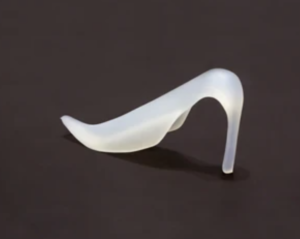Rhinoplasty with Silicone vs Gore-Tex Nose Implant | Pros, Cons & More!
Rhinoplasty, commonly known as a nose job, often involves the use of implants to achieve the desired shape and contour of the nose. Among the various materials available, silicone and Gore-Tex are two of the most prominent options. Each material offers its own set of advantages and disadvantages, making it essential for patients to understand their differences before making a decision. In this article, we delve into the specifics of silicone and Gore-Tex nose implants, exploring their benefits, drawbacks, and key considerations. Whether you’re aiming for a natural look or a more defined structure, understanding these materials can help you and your surgeon make the best choice for your rhinoplasty needs.
Are you looking to get rhinoplasty using silicone or gore-tex implants? Reach out to us to schedule a free online consultation!

Contents
What Is A Silicone Nose Implant?
Silicone nose implants are medical-grade synthetic devices designed specifically to enhance or alter the shape of the nasal structure. These implants are typically composed of solid silicone, a flexible and durable material that is inert, meaning it does not react with body tissues. Silicone implants are preformed in a variety of shapes and sizes, allowing for customization based on the individual anatomical needs and aesthetic goals of the patient. The implant can be further modified by the surgeon during the procedure to precisely fit the contours of the patient’s nose, ensuring a natural and harmonious appearance. Silicone’s intrinsic properties, including its pliability and stability, make it an ideal choice for achieving consistent and predictable outcomes in rhinoplasty.

1. Pros of Silicone Nose Implants
In the world of rhinoplasty, silicone has established itself as the most popular implant material for several compelling reasons. This synthetic polymer offers a multitude of benefits that make it a preferred choice among both patients and surgeons.
Advantages for Patients:
- Low Risk of Side Effects: One of the most significant factors contributing to silicone’s popularity is its low likelihood of causing adverse reactions. Compared to other materials, silicone is generally well-tolerated by the body, reducing the risk of complications such as infection, inflammation, or allergic reactions.
- Minimal Incisions: The process of inserting a silicone implant typically requires only small incisions. This translates to reduced scarring and a quicker recovery time, both of which are highly appealing to patients seeking to enhance their appearance with minimal downtime.
- Aesthetic Appeal: Silicone implants are particularly effective in providing a noticeable and aesthetically pleasing lift to the nasal structure. The material can be shaped and molded to create natural-looking results that enhance the overall appearance of the nose.
Advantages for Surgeons:
- Ease of Insertion: Silicone is a highly malleable material, making it easier to insert and adjust during the surgical procedure. This allows surgeons to achieve the desired shape and contour with greater precision.
- Adjustability: The flexibility of silicone means that surgeons can fine-tune the implant’s positioning to match the patient’s natural anatomy. This adjustability is crucial for achieving optimal results and ensuring patient satisfaction.
- Reversibility: In cases where revisions are necessary or if the patient experiences any issues, silicone implants can be relatively easily removed or replaced. This reversibility offers an added layer of security for both the patient and the surgeon, knowing that adjustments can be made if needed.
2. Cons of Silicone Nose Implants
- Implant Shifting: Silicone does not integrate with the body’s tissues as Gore-Tex does. This lack of integration means that there’s a higher chance of the implant shifting out of its intended position over time. Any significant movement could necessitate corrective surgery, leading to additional costs and recovery time.
- Artificial Appearance: For some patients, silicone implants can result in a more pronounced or artificial look, particularly if not carefully shaped and positioned. While many achieve excellent results, there is always a risk of the implant not blending seamlessly with the natural nasal structure.
- Temperature Sensitivity: Unlike Gore-Tex, silicone can be more sensitive to extreme temperatures. In warmer climates, there is a slight risk of material behavior altering over time, although this is a minor concern compared to other factors.
- Revision Challenges: Although silicone implants are generally easier to remove compared to Gore-Tex, any revision surgery can still pose challenges. Removing and replacing implants can lead to additional scarring and complexity in subsequent procedures.
Long-standing Popularity:
Silicone has been a staple in the field of rhinoplasty for many years. Its long-standing use is a testament to its efficacy and reliability. Patients can take comfort in knowing that silicone implants have a proven track record of delivering beautiful, lasting results.
In summary, silicone nose implants offer a combination of safety, ease of use, and aesthetic benefits that have solidified their place as a top choice for rhinoplasty. Both patients and surgeons appreciate the advantages offered by this versatile material, making it a go-to option for enhancing the appearance of the nose.

What Is a Gore-Tex Implant?
Gore-Tex implants, also known as expanded polytetrafluoroethylene (ePTFE) implants, are another highly regarded material used in rhinoplasty to reshape and augment the nose. Developed initially for medical and industrial applications, Gore-Tex has unique properties that make it suitable for use as a nasal implant.
Gore-Tex is a synthetic, biocompatible polymer, renowned for its porous structure. This microporous design allows for tissue integration, wherein the body’s natural tissues can grow into the implant over time. Such integration helps to anchor the implant securely in place, reducing the likelihood of shifting or migration.
Are you looking to get rhinoplasty using silicone or gore-tex implants? Reach out to us to schedule a free online consultation!
1. Pros of Gore-Tex Nose Implants
When considering Gore-Tex as an option for nasal augmentation, it’s essential to weigh its unique benefits and potential drawbacks to determine if it’s the right choice for your rhinoplasty needs.
Advantages for Patients:
- Bio-Compatibility: One of the primary benefits of Gore-Tex is its excellent compatibility with human tissues. The body generally accepts the material well, significantly reducing the risks of adverse reactions such as inflammation, rejection, or infection.
- Natural Feel and Look: The microporous structure of Gore-Tex allows it to blend seamlessly with the body’s tissues, offering a softer and more natural feel compared to some other implant materials. This contributes to a more natural-looking result, both in appearance and to the touch.
- Reduced Scarring: Like silicone, Gore-Tex implants often require smaller incisions, which can lead to reduced scarring and faster healing times. The integrated tissue growth can also help in maintaining a smooth and aesthetically pleasing nasal contour.
- Temperature Resilience: Gore-Tex can withstand higher temperatures compared to silicone. This makes it an excellent choice for individuals living in warmer climates, such as in countries like Indonesia, Singapore, and regions in the Middle East.
Advantages for Surgeons:
- Tissue Integration: The primary advantage from a surgical perspective is the implant’s ability to integrate with the body’s tissues. This integration can result in a more stable and durable enhancement that is less prone to shifting over time.
- Customizability: Gore-Tex implants can be easily cut, shaped, and fashioned to fit the unique anatomical structure of each patient’s nose. This flexibility allows surgeons to achieve highly tailored results that align closely with the patient’s desired outcome.
- Versatility: The material’s versatility means it can be used in both primary rhinoplasty and revision cases. Its adaptability makes it a go-to option for a range of nasal reconstructive needs.
2. Cons of Gore-Tex Nose Implants
- Cost: One of the major drawbacks of Gore-Tex implants is their higher price point. The cost can be a significant factor for many patients when choosing between implant materials.
- Difficult Removal: Once Gore-Tex integrates with the nasal tissue, it can become challenging to remove, even in the event of an infection or other complications. This integration, while beneficial for stability, complicates potential revision surgeries or implant removal.
- Potential Shrinkage: Over time, there is a possibility that Gore-Tex implants may shrink. This can alter the appearance of the nose and may necessitate additional corrective surgery to address any changes.
Why Get Implant Rhinoplasty in Korea?
Opting for rhinoplasty with silicone or Gore-Tex implants in Korea is an increasingly popular choice due to the country’s reputation for advanced cosmetic surgery techniques and highly skilled surgeons. South Korea is renowned for its cutting-edge medical facilities and innovative approaches to plastic surgery, particularly in the realm of facial enhancements. Surgeons in Korea are well-versed in the latest methodologies and have extensive experience with both silicone and Gore-Tex implants, ensuring meticulous results tailored to individual needs. Furthermore, the medical tourism infrastructure in Korea offers comprehensive support, including pre- and post-operative care, often at a more competitive cost compared to Western countries. This combination of expertise, advanced technology, and affordability makes Korea an attractive destination for those seeking high-quality rhinoplasty procedures.
Conclusion
As you have read, they both have pros and cons. There’s no one-style-fits-all when it comes to plastic surgery as everyone has different goals and desires. So the best option is to write down possible questions you might have and visit a specialist and consult with the doctor. Shin Medical can also help you find the best for you, with their field experience and know-how, if you reach out to them. If you want to learn more about Rhinoplasty, click the link below and find out at this page. https://www.shinmedical.com/procedure/rhinoplasty/
Frequently Asked Questions
Which implant material is better for achieving a natural look, silicone or Gore-Tex?
Gore-Tex is generally preferred for achieving a natural look because its microporous structure allows it to integrate with the body’s tissues, offering a softer and more natural feel. However, silicone can also provide excellent results with skilled surgical techniques.
Is one implant material safer than the other in terms of risk of infection?
Both silicone and Gore-Tex implants carry a similar risk of infection, which is generally low but present. The key to minimizing this risk is selecting a qualified, experienced surgeon and following proper post-operative care instructions.
Can silicone or Gore-Tex implants be easily removed or revised if I’m not satisfied with the results?
Silicone implants are generally easier to remove and revise compared to Gore-Tex implants, which integrate with the nasal tissue and can be more challenging to extract. However, the choice of material should be based on overall suitability and desired outcomes rather than ease of removal.







